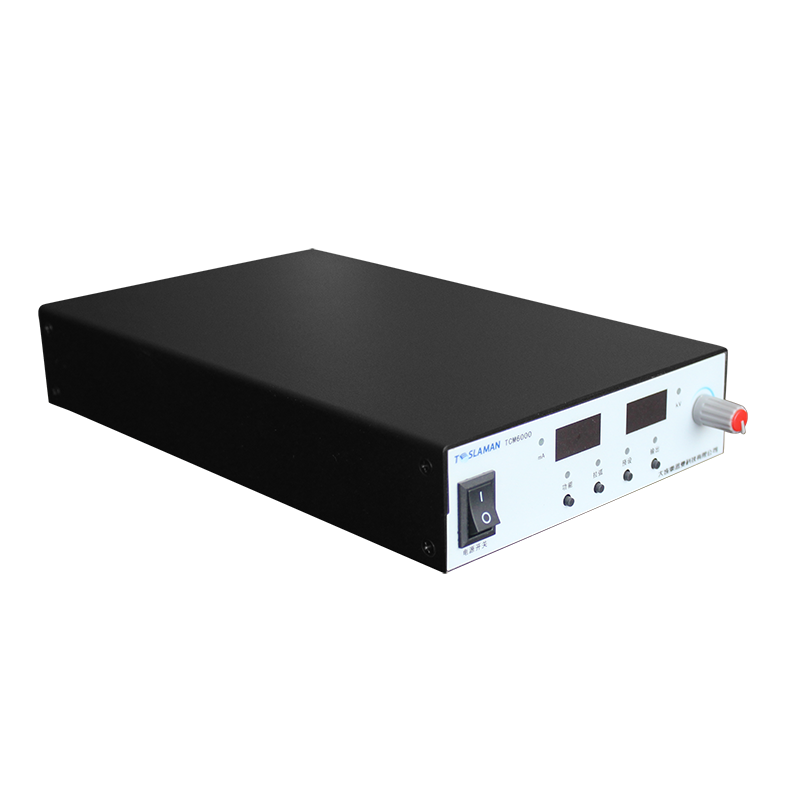Innovative Applications of High-Voltage Power Supplies in Rapid Food Testing
In the field of food safety, detection efficiency and accuracy are core challenges. High-voltage power supply technology is becoming a key engine for advancing rapid food testing by enhancing the sensitivity of analytical instruments, shortening response times, and optimizing integrated designs.
1. Leap in Mass Spectrometry Sensitivity
As the core power source of mass spectrometers, the stability of high-voltage power supplies directly determines ionization efficiency and signal capture capability. In trace contaminant detection (e.g., pesticide residues, veterinary drug residues), breakthroughs are achieved through:
1. Ionization Efficiency Optimization: High-voltage electric fields enable efficient ionization of sample molecules. Voltage fluctuations exceeding ±0.05% significantly reduce ionization efficiency, causing signal loss. Next-generation power supplies adopt digital closed-loop feedback systems, limiting voltage ripple to <0.01%, ensuring ion flow stability. This reduces detection limits to ppb (parts per billion) levels and shortens detection time from 30 minutes to under 1 minute.
2. Ion Focusing Innovation: Electrostatic ion funnel technology uses spherical mesh electrodes to create funnel-shaped fields under high voltage, guiding ion paths. Compared to traditional RF fields, sensitivity for volatile organic compounds (VOCs) increases by 3.8–7.3× without fragmenting target molecules.
2. High-Voltage Field-Driven Rapid Separation and Screening
Beyond mass spectrometry, high-voltage power supplies are critical in chromatography and sensing:
1. Accelerated Chromatography: Gas chromatography (GC) and high-performance liquid chromatography (HPLC) rely on high-voltage fields for rapid separation. For example, electron capture detectors (ECD) require stable high-voltage fields to identify electronegative groups (e.g., halogens), cutting organic chlorine pesticide detection time by 50%.
2. Electrochemical Sensor Upgrades: In heavy metal detection, pulsed high-voltage polarization enhances electrode signals. Specific waveforms (e.g., square-wave voltammetry) reduce sensor response times to seconds while improving signal-to-noise ratios for lead and cadmium screening.
3. High-Voltage Pulse Technology: Integrated Detection and Sterilization
Innovative applications combine detection and pretreatment:
1. In-Situ Sterilization-Assisted Detection: Pulsed electric fields (PEF, ≥20 kV/cm) instantly sterilize liquid foods (e.g., juice) while rupturing cell membranes to release intracellular targets (e.g., toxins), eliminating preprocessing and improving efficiency by 40%.
2. Microfluidic Chip Integration: High-voltage drives sample separation in microchannels. Applying 1–5 kV increases electrophoretic separation speed by 10×, enabling qualitative and quantitative pathogen (e.g., Salmonella) analysis in 5 minutes using impedance sensing.
4. Challenges and Future Directions
Current limitations include:
1. Miniaturization-Power Balance: Portable devices demand high-voltage modules with low power consumption (<10 W). Wide-bandgap semiconductors (e.g., SiC) offer solutions.
2. Multi-Parameter Coordination: Complex samples require dynamic voltage, frequency, and waveform adjustments. AI algorithms can optimize parameters in real time, such as predicting ideal field strengths for different food matrices.
Conclusion
High-voltage power supply technology is evolving from a single-function driver to an intelligent detection core. Its integration with mass spectrometry, sensing, and microfluidics not only redefines speed limits but also enables end-to-end food safety management. Future advancements in materials science and algorithms will unlock more second-response detection scenarios, building a dynamic safety net for global food security.




















